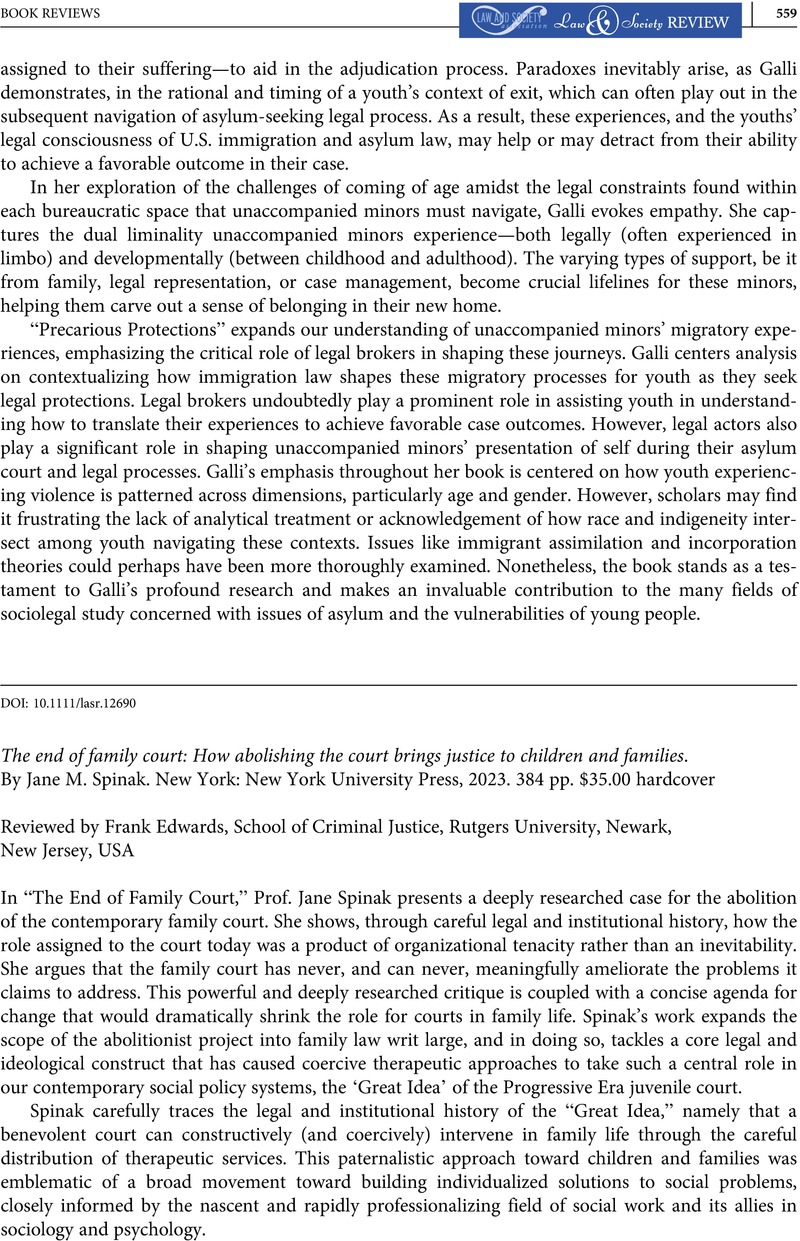No CrossRef data available.
Article contents
The end of family court: How abolishing the court brings justice to children and families. By Jane M. Spinak. New York: New York University Press, 2023. 384 pp. $35.00 hardcover
Review products
The end of family court: How abolishing the court brings justice to children and families. By Jane M. Spinak. New York: New York University Press, 2023. 384 pp. $35.00 hardcover
Published online by Cambridge University Press: 01 January 2024
Abstract
An abstract is not available for this content so a preview has been provided. Please use the Get access link above for information on how to access this content.

- Type
- Book Reviews
- Information
- Copyright
- © 2023 Law and Society Association.


